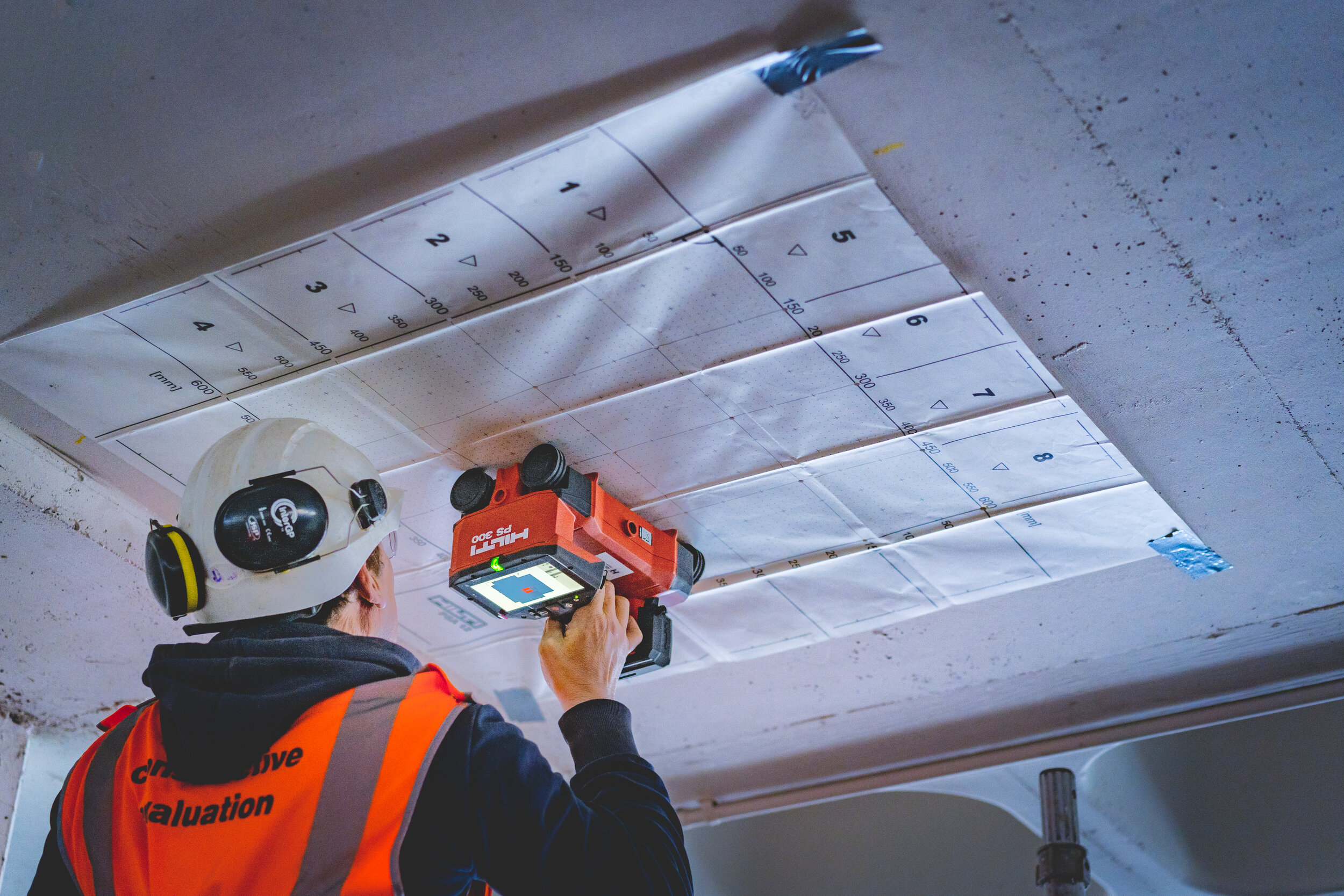Make The Most Of Building And Construction Safety with RainierGPR Concrete Scanning Providers
Make The Most Of Building And Construction Safety with RainierGPR Concrete Scanning Providers
Blog Article
Exploring the Key Advantages of Concrete Scanning in Building And Construction Projects
In the world of modern construction practices, the application of concrete scanning modern technology has arised as a pivotal tool for making certain project performance and structural integrity. From improving safety and security measures to accurately finding energies hidden beneath the surface, the benefits of concrete scanning are multifaceted. RainierGPR Concrete Scanning.
Boosted Precaution
Using innovative concrete scanning technology enhances safety and security actions on building and construction websites by providing precise detection of potential threats concealed underneath the surface. This innovation allows construction teams to identify rebar, conduits, post-tension wires, and various other obstructions before excavation or drilling, considerably decreasing the threat of crashes. By determining these elements specifically, employees can prevent harmful critical architectural parts, hence stopping injuries, delays, and pricey repairs.
Moreover, concrete scanning plays an essential duty in ensuring the stability of existing structures during improvements or expansions. By identifying weaknesses, gaps, or deterioration within concrete elements, engineers can address these issues proactively, enhancing the general safety and longevity of the structure. This positive method not just mitigates the threat of structural failures yet likewise decreases the potential for crashes triggered by unforeseen structural shortages.
Basically, the execution of concrete scanning innovation acts as a proactive precaution that safeguards both building and construction workers and the architectural honesty of buildings, ultimately adding to the overall success and performance of building projects. - RainierGPR Concrete Scanning
Accurate Discovery of Utilities
Concrete scanning modern technology assists in exact recognition of below ground energies, improving construction site security and performance. Precise detection of utilities is crucial in building jobs to prevent costly problems, task delays, and most significantly, guarantee the security of workers and the public. By making use of advanced scanning innovations such as ground-penetrating radar (GPR) and electromagnetic induction, building and construction teams can draw up the place of buried pipelines, cable televisions, and other utilities with high levels of accuracy.

Time and Expense Effectiveness

Concrete scanning innovation enables building teams to accurately situate rebar, post-tension cords, and various other ingrained items within concrete structures. This specific information aids in avoiding pricey errors such as unexpected damages to crucial elements throughout boring, reducing, or coring activities. Furthermore, by determining prospective dangers in advance, the demand for pricey repairs or rework due to damages can be reduced, leading to set you back financial savings for the task.

In addition, the capacity to quickly and accurately discover energies under the surface area without causing any type of damages not just conserves time yet additionally stops expensive disruptions to existing framework. Overall, the time and expense performance benefits of concrete scanning make it a vital tool for enhancing building project administration and implementation.
Preservation of Architectural Honesty
Preserving the structural stability of structures and infrastructure is paramount in making sure long-lasting security and safety and security. Concrete scanning plays a vital duty in this conservation process by allowing building and construction experts to determine potential dangers to the structural honesty of a building or infrastructure prior to they rise right into significant concerns. Through the usage of advanced scanning innovations such as ground-penetrating radar (GPR) and electromagnetic induction, building teams can non-invasively assess the condition of concrete structures, locate rebar, post-tension cables, and various other embedded elements, and identify any type of voids, fractures, or wear and tear within the concrete.
Improved Project Preparation
In order to guarantee the successful implementation of building and construction jobs, precise attention to information and extensive preparation are essential components that come from a thorough understanding of the structural problems recognized with concrete scanning. Enhanced job preparation, promoted by concrete scanning, enables construction teams to preemptively deal with prospective difficulties, allot sources a go to these guys lot more successfully, and establish reasonable timelines. By precisely determining the location of rebar, post-tension cable televisions, and other embedded things within concrete structures, my link task managers can create a lot more exact building and construction plans that decrease the danger of expensive mistakes or hold-ups. Additionally, the information obtained from concrete scanning enables stakeholders to make educated choices pertaining to architectural alterations, improvements, or developments, causing smoother task transitions and improved general job end results. Inevitably, including concrete scanning right into the project preparation phase enhances coordination amongst group members, promotes proactive analytical, and adds to the effective distribution of building jobs within spending plan and timetable constraints.
Conclusion
To conclude, concrete scanning offers many advantages in building and construction tasks. By improving precaution, accurately identifying utilities, boosting time and price efficiency, protecting structural stability, and assisting in project preparation, concrete scanning proves to be a necessary tool for effective project implementation. Its ability to alleviate threats, increase effectiveness, and make sure task honesty makes it an essential property for building specialists.
In the realm of contemporary building methods, the application of concrete scanning modern technology has arised as a pivotal tool for ensuring task efficiency and architectural honesty.Concrete scanning innovation makes it possible for building teams to properly find rebar, post-tension wires, and various other ingrained items within concrete frameworks. Through the use of advanced scanning technologies such as ground-penetrating radar (GPR) and electro-magnetic induction, construction groups can non-invasively analyze the condition of concrete frameworks, situate rebar, post-tension cables, and other ingrained elements, and identify any type of voids, cracks, or damage within the concrete.
In order to make certain the successful execution of construction projects, precise focus to information and comprehensive preparation are essential elements that stem from an extensive understanding of the architectural conditions recognized with concrete scanning. Ultimately, including concrete scanning into the project preparation phase improves coordination dig this among team members, cultivates aggressive problem-solving, and adds to the effective delivery of building tasks within spending plan and routine constraints.
Report this page